 |
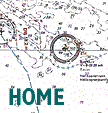 |
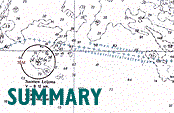 |
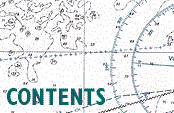 |
CHAPTER 4 OPERATIONS ON BOARD |
||
4.1 General |
||
|
The work schedule for the crew of the ESTONIA was in general two weeks' service on board, followed by two weeks ashore. Consequently two full crews were employed alternately and all positions on board were held by two persons.
|
||
4.2 The crew |
||
4.2.1 The manning of the shipPrior to departure on 27 September 1994 a crew list of 186 people was presented to the Tallinn harbour master. Of these 149 comprised the actual crew, which was into the 13th day of its current 14-day duty period. In addition the list contained 6 trainees, 18 entertainers, 9 advisors and 4 crew members of the alternate crew. One of them was the master of the alternate crew, aboard for examination for his pilot exemption certificate.
The deck officers on board Estonian vessels - as well as on Swedish and Finnish - are called chief officer, second officer, third officer and fourth officer. The ESTONIA had two second officers, here designated second officer A and second officer B.
The master was born in 1954. He graduated at the Maritime School of Tallinn in 1973 and started his career at sea in 1974 (The Maritime School of Tallinn together with the Tallinn Fisheries Maritime School merged to form the Estonian Centre of Maritime Education which was established on 1 January 1992 and is the highest maritime academy in Estonia). He served as fourth and third officer until 1977. He studied at the Admiral Makarov Highest Engineering Maritime Academy in Leningrad from 1977 to 1982 (Leningrad changed name to St. Petersburg in November 1991). He subsequently served as second and then chief officer until 1986, when he got his master mariner's licence, and his first command as master on general cargo ships in transocean traffic.
The chief officer was born in 1964. He graduated at the Admiral Makarov Highest Engineering Maritime Academy in Leningrad in 1988. He held a chief officer's unlimited licence. He had served as third officer on general cargo ships 1988-1990 and was third and then second officer on the GEORG OTS 1990-1992. In January 1993 he was appointed second officer on the ESTONIA, and in August 1994 was promoted to chief officer.
Second officer A was born in 1963. He graduated at the Maritime School of Tallinn in 1988. He held an officer-of-the-watch licence, issued in Leningrad in 1988. He served as third officer on ro-ro vessels between 1988-1992. In 1992 he became second officer on the GEORG OTS. From 1993 he was appointed second officer on the ESTONIA.
Second officer B was born in 1964. He held a chief officer's unlimited licence, issued in Tallinn in 1994. He graduated at the Admiral Makarov Highest Engineering Maritime Academy in Leningrad in 1991. In 1992 he was second officer on the GEORG OTS and from 1993 held the same position on the ESTONIA.
The third officer was born in 1966. He graduated at the Maritime School of Tallinn in 1988 and at the Kotka Maritime College, Finland, in 1992. He held an officer-of-the-watch licence, issued in Helsinki in 1992. He was appointed fourth officer on the ESTONIA in 1993 and in 1994 promoted to third officer.
The fourth officer was born in 1973. He graduated at the Estonian Centre of Maritime Education in Tallinn in 1992. He held an officer-of-the-watch licence, issued in Tallinn in 1994. In 1993 he was appointed quartermaster on the ESTONIA, and in 1994 he was promoted to fourth officer.
The radio officer was born in 1941. He graduated as ship's radio operator and radio navigator at Tallinn Technical School No. 1. in 1962 and at the Tallinn Fisheries Maritime School in 1986. He held a first-class radio operator certificate, issued in Leningrad in 1974. He had served as radio officer in cargo ships 1962-1993. In March 1993 he was appointed radio officer on the ESTONIA.
The boatswains and all the able seamen had attended the general ship safety course on the training vessels ARZAMASS or KORALL.
The engine officers on board Estonian vessels - as well as on Swedish and Finnish - are called chief engineer, first engineer, second engineer and third engineer.
The chief engineer was born in 1950. He graduated at the Maritime School of Tallinn in 1972 and at the Admiral Makarov Highest Engineering Academy in Leningrad in 1989. He held a chief engineer's unlimited licence, issued in Tallinn in 1994. From 1972 until 1990 he worked as third, second and chief engineer in different vessels. He served as chief engineer on the ro-ro ferry TRANSESTONIA and on the motor vessel SAINT PATRICK II 1990-1993. From February 1993 he was chief engineer on the ESTONIA.
The first engineer was born in 1952. He graduated at the Admiral Makarov Highest Engineering Academy in Leningrad in 1976. He held a first engineer's certificate, issued in Leningrad in 1976. He also held a certificate from the Advanced Training Course in Leningrad in 1990.
The second engineer was born in 1947. He graduated at the Maritime School of Tallinn in 1968 and at the Admiral Makarov Highest Engineering Academy in Leningrad in 1981. He held a second engineer's certificate, issued in Leningrad in 1972.
The third engineer was born in 1964. He graduated at the Admiral Makarov Highest Engineering Academy in Leningrad in 1990. He held a third engineer's certificate, issued in Leningrad in 1990.
The fourth engineer was born in 1966. He graduated at the Maritime School of Tallinn in 1986. He held a third engineer's certificate issued in Leningrad in 1986.
The electrical engineer was born in 1951. He graduated at the Admiral Makarov Highest Engineering Academy in Leningrad in 1974. He held a first-class electrical engineer's licence, issued in 1984.
The refrigeration engineer was born in 1959. He graduated at the Tallinn Fisheries Maritime School in 1978. He held a refrigeration engineer's certificate, issued in Tallinn in 1992.
The systems engineer was born in 1969. He graduated at the Maritime School of Tallinn in 1991. He held a third engineer's certificate issued in Leningrad 1991. He held positions as fourth engineer 1991-1992. In January 1993 he was appointed systems engineer on the ESTONIA.
There were eight ratings in the engine department: four senior motormen, two electricians, one welder and one turner. All had passed the general ship safety course on the training vessels ARZAMASS or KORALL.
The highest-ranking officer of the catering crew was the chief purser (sometimes called hotel purser). He was born in 1965. He had been employed by the ESCO since 1985. He had passed the general ship safety course.
|
||
4.3 Working routines and organisation |
||
4.3.1 Deck departmentThe master was responsible for all activities on board the vessel. He reported to the ESCO on all matters regarding navigation, day-to-day operation, personnel and related issues. In technical matters, he reported to Nordström & Thulin.
The chief engineer was responsible for the organisation and all work in the engine department, for the purchase and storage of spare parts and consumables, and for the technical maintenance of the entire vessel. He reported to the technical superintendent of Nordström & Thulin, and certain parts of these reports were copied to ESCO.
The total number of persons employed in the catering department was 121.
|
||
4.4 Safety organisation |
||
4.4.1 The development of the safety organisationWhen the operation of the ESTONIA was taken over by ESCO in 1992, a new safety organisation was established. The new organisation was based partly on the previous owner's organisation plan, and partly on the experience of Nordström & Thulin from their previous vessel on the same route.
Various types of alarm were used on board the ESTONIA. The lifeboat alarm and fire alarm were general alarms, addressed to passengers and crew. Besides these there was a coded alarm “Mr Skylight” addressed only to the crew and intended to alert relevant parts of the safety organisation.
The lifeboat alarm - seven short sound signals, followed by one long one - was given repetitively with the alarm bells and/or the vessel's horn. When the alarm was given, the command group, the port and starboard boat groups, the engine control group and the eleven evacuation groups were alerted.
The fire alarm - continuous repetitive short sound signals - was also given with the alarm bells and/or the vessel's horn. When the alarm was given, the command group, the two fire groups, the engine control group, the control group, the port and starboard boat groups and the first aid group were activated.
Without alarming the passengers, the crew could be alerted over the public address system with the coded message “Mr Skylight”. This message could also be used with a suffix. Depending on which suffix was used, selected parts of the safety organisation were activated. The boat groups were activated by all Skylight messages.
The safety organisation was led by a command group mustering on the bridge. The command group consisted of the master, the chief engineer, the chief officer, the chief purser and the third officer.
The various groups in the safety organisation drilled according to the vessel's exercise schedule. The drills were led by the group leader, who also made a report of the content of the drill and of any group members absence. This report was submitted to the responsible officer in the command group.
|
||
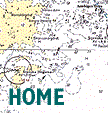 |
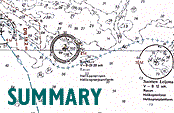 |
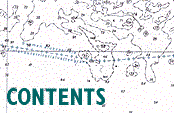 |
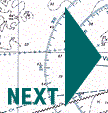 |